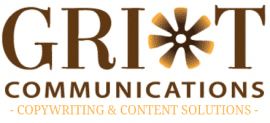In a time where most of our interactions are mediated by a screen, what we’re craving most is an authentic human connection with brands that we trust. Here’s what I’ve learned about the power of storytelling that can supercharge your brand story.
We were a dozen wanna-be storytellers in a circle, steeling ourselves for those first tortuous 10 minutes … the dreaded icebreaker.
I was imagining the worst: having to come up with an improvised story on the spot. If that happened I might have turned and run out of the room.
But when it came to it, we all breathed a collective sigh of relief. The tutor took us through a memory game sequence with gestures.
First, we each did a small gesture that was unique to us. Next, we went around the circle and each of us performed the gestures of those in the circle before us, before adding our own.
Finally, we played a rapid-fire signal and response game using our gestures.
I learned two important things from that exercise about the power of storytelling.
1) No story is more powerful than the ones we tell ourselves.
Anyone who happened upon my storytelling class doing random gestures might have concluded we’d invented some new language. Or that we’d just landed from the planet Uz.
We are hardwired to create meaning from our stories. Neuroscience backs this up. Our brains are always making connections and creating meaning, even if that meaning isn’t necessarily about what’s real. And where there are gaps or something doesn’t fit our brains work hard to hold a narrative together that gives us a sense of security.
Great brand storytellers understand that a story is much more than connecting the dots. It’s about the gaps that allow people to fill in the blanks for themselves.
2) Stories are remembered and shared.
We’re likely to remember stories about 22 times more than facts. As consumers, we’re bombarded with information, but scientists have found that our brain activity is fired up when we’re listening to, or watching stories. Our synapses are forming strong neural pathways, releasing feel-good hormones like oxytocin or stress hormones like cortisol. It’s why we cry at romance or tragedies and shout at the screen when the hero’s about to step into danger.
A good brand storyteller weaves facts and emotion to meaningfully connect his/her ideal audiences to who they are and what they stand for.
It’s no wonder then that brand storytelling is now a powerful marketing disruptor in an overcrowded marketplace. Big brands like Nike, Apple and Disney are masters at the art of storytelling.
But, although small businesses have an edge, in that we’re closer to our audiences, personal origin stories and values, we tend not to put our stories front and centre. As a result, we end up putting out content that focuses on proving our authority or giving information. Remember the infomercials of the eighties?
What is a brand story?
Many of the clients I see are confused about the term brand story. They tend to view it as a single story on their website’s About page. But relegating it to the back seat risks your story being ignored, or told by someone else. A brand story is the electricity, or spark that enlivens your brand to create a meaningful connection with your ideal clients.
There’s never been a better time to be thinking about your brand story. In a new digital landscape where we’re much more focused on our screens as consumers what we want is meaningful human connection.
Getting started
If you’re looking to craft a brand story from scratch, or to review your brand storytelling strategy, here are 5 questions to consider to help you get the most out of it.
1) What do you want to be remembered for? What is your vision and purpose in the world? What are your values? What do you stand for? What is your brand’s personality? These are the fundamental building blocks for a successful brand story.
2) What’s the running narrative behind everything you do? This is about more than changing some words on your About page, or posting Insta photos of you living your best life. It goes to the heart of what you’re about and everything you do. Think about how you can recognise and capture those stories that intrinsically reflect your brand.
3) What stories do your audience personas enjoy? Personas are drawn from data on the general behaviours of your target audience, but you can research and add detail that will help you target your message more clearly in their own language. Finding the stories they love will help you to engage their emotions.
4) What’s the crux of your message? Your story should have a purpose that either overtly or subtly links to your call to action: share your experience, download this freebie, join our community, buy my service or product, etc.
5) How can you engage with the stories your audiences and customers are already telling? Think about the bigger stories that your audiences are telling or sharing on social media, and consider the ways that your brand values, story and purpose are reflected in them.
Ultimately, consistent brand storytelling helps you to build relationships with your audiences and clients. These relationships create a shared experience and a sense of community that can move them to become loyal fans of your brand.
Are you ready to make more of your brand story?
I’d love to help. Book a clarity call with me today.
Image: Victor Freitas

